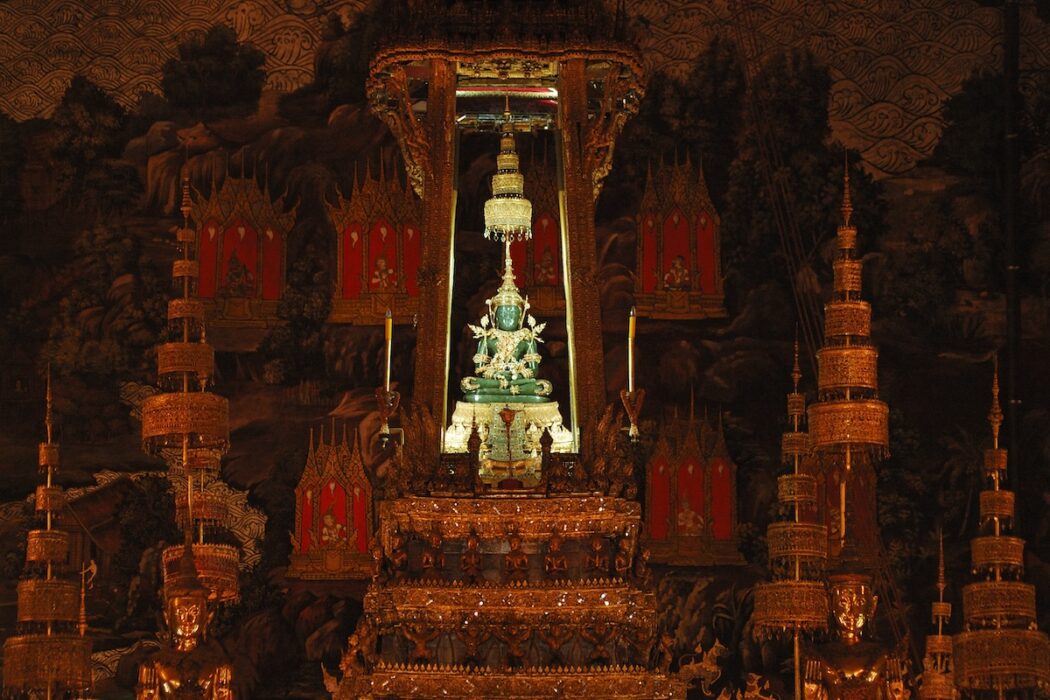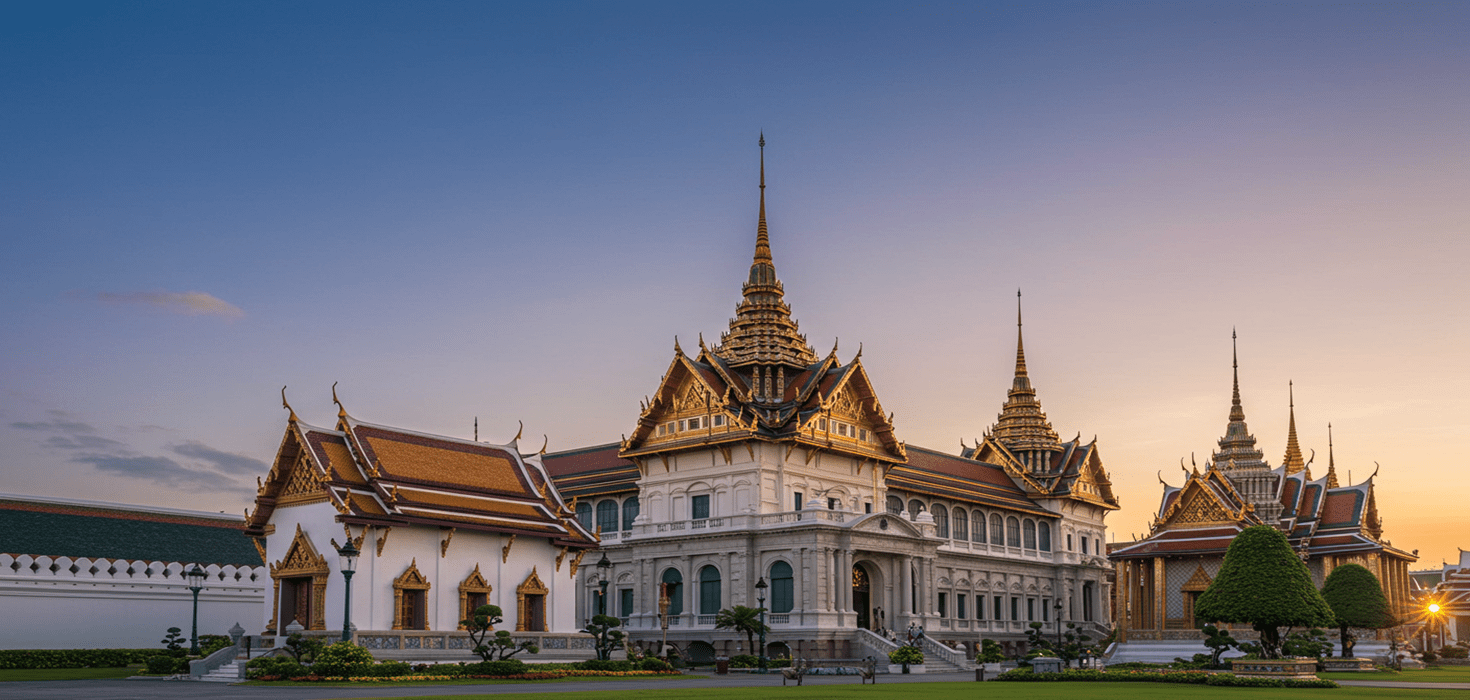Wat Arun Wonders: Your Ultimate Guide to Tickets, Tips, and Timeless Experiences in Bangkok!
Bangkok is a city that never ceases to amaze, but among its many treasures, Wat Arun, or the Temple of Dawn, stands out as a true icon. This stunning temple, with its intricate design and rich history, is not just a feast for the eyes but also a significant part of Thailand’s cultural heritage. As the sun rises or sets, the temple’s spires glimmer against the sky, creating a magical atmosphere that draws visitors from all corners of the globe.
Wat Arun’s architectural beauty is a blend of traditional Thai and Khmer influences, making it a must-visit for anyone seeking to experience the essence of Bangkok. From the moment you arrive, you’ll be captivated by the temple’s towering prang (spire) adorned with colorful porcelain, shimmering in the sunlight. It’s not just a place of worship; it’s a testament to the artistry and devotion of the Thai people. Whether you’re a history buff, an architecture enthusiast, or simply looking for a picturesque spot, Wat Arun promises an unforgettable experience.
Discovering Wat Arun: The Temple of Dawn
Stepping into Wat Arun is like stepping back in time. The temple, originally named Wat Makok, was later renamed in honor of Aruna, the Hindu god of dawn. Its history is rich, dating back to the Ayutthaya Kingdom in the 17th century, and it served as a royal temple during the reign of King Rama II. The temple is renowned for its stunning architecture, which features a central prang that rises 70 meters high, surrounded by four smaller prangs representing the mythical Mount Meru, the center of the universe in Buddhist cosmology.
As you wander through the temple grounds, don’t miss the exquisite details that adorn the walls and spires. The intricate mosaics made from Chinese porcelain tell stories of Thai mythology and history, inviting visitors to explore their meanings. One fascinating anecdote involves the temple’s construction materials; much of the porcelain used came from the remnants of Chinese trade ships, showcasing the deep connections between Thailand and its neighbors.
For those eager to learn more, a visit to Wat Arun is not just about admiring its beauty. Engaging with the temple’s cultural significance offers a deeper appreciation of Thailand’s spiritual landscape. The temple is a popular site for Buddhist ceremonies, and witnessing one can add a profound layer to your visit. Whether you’re there to meditate, take photographs, or simply soak in the atmosphere, Wat Arun is a place that resonates with peace and history.
Curious to know more? Check out our Comprehensive Guide to Wat Arun for an in-depth look at this magnificent temple!
Essential Visitor Information: Tickets and Entrance Fees
Planning your visit to Wat Arun? Let’s talk tickets! The entrance fee is quite reasonable, especially considering the breathtaking experience that awaits you. For foreign visitors, the ticket price is around 100 Thai Baht, while Thai nationals enjoy a discounted rate of just 20 Baht. This makes Wat Arun not only a cultural gem but also an affordable attraction for travelers.
Tickets can be purchased at the entrance, but for those who like to plan ahead, online booking options are available too. This can save you time, especially during peak tourist seasons when lines can be long. If you’re visiting during the weekends or holidays, it’s wise to arrive early to secure your spot without the hassle of waiting in line.
Don’t forget to keep your ticket handy as it grants you access to the temple grounds and its beautiful surroundings. The ticket also includes access to the temple’s museum, where you can learn more about its history and significance. Want to know more about ticketing and visitor information? Check out our article on Explore Wat Arun Riverside Temple for all the details!
Planning Your Visit: Opening Hours and Best Times to Experience Wat Arun
Wat Arun welcomes visitors daily from 8:30 AM to 5:30 PM, making it easy to fit into your Bangkok itinerary. However, if you want to experience the temple in its most enchanting light, consider timing your visit for sunrise or sunset. The golden rays of the sun reflecting off the temple’s spires create a breathtaking sight that’s simply unforgettable.
Early mornings are particularly serene, offering a peaceful atmosphere to explore and take photographs without the crowds. Alternatively, visiting during the late afternoon allows you to capture the stunning sunset views over the Chao Phraya River, with the temple illuminated in warm hues. This is a perfect time to snap that Instagram-worthy shot!
To make the most of your visit, consider combining your trip to Wat Arun with a boat ride along the river. This not only provides a unique perspective of the temple but also allows you to explore other nearby attractions. For more tips on planning your visit, check out our guide on the Spiritual Heart of Bangkok: Temples.
Dress Code and Temple Etiquette: What to Wear at Wat Arun
As a sacred site, Wat Arun has a dress code that visitors must adhere to. It’s important to dress respectfully, covering your shoulders and knees. Lightweight, breathable clothing is ideal for the warm Bangkok climate, but be sure to avoid shorts and sleeveless tops. For women, a long skirt or loose-fitting trousers paired with a modest top works well, while men should opt for long pants and a t-shirt.
Footwear is another consideration; it’s customary to remove your shoes before entering the temple buildings. Many visitors find it convenient to wear flip-flops or sandals that are easy to slip on and off. Following these simple rules not only shows respect for the temple but also enhances your overall experience.
While visiting Wat Arun, remember to maintain a quiet demeanor and be mindful of others who are there to pray or reflect. Taking photos is allowed, but be respectful of the sacred spaces and avoid using flash. Want to learn more about temple etiquette? Our guide on the Majestic Temples of Bangkok has all the insights you need!
Exploring Wat Arun: Guided Tours and Unique Experiences
For those who want to go beyond simply wandering the temple grounds, consider joining a guided tour of Wat Arun. These tours often provide insights that you might miss on your own, including fascinating stories about the temple’s architecture and the symbolism behind its intricate designs. Knowledgeable guides can enhance your experience by sharing the rich history of the temple and its significance in Thai culture.
One unique experience you might encounter is a cultural performance held within the temple grounds. These events often feature traditional Thai music and dance, providing a vibrant backdrop to the serene atmosphere of Wat Arun. Imagine watching a colorful dance unfold against the stunning backdrop of the temple at sunset—what a magical moment!
If you’re into photography, some tours even offer special photography sessions, where you can learn tips and tricks on how to capture the temple’s beauty from the best angles. Whether you’re a novice or a seasoned photographer, having a guide to help you find those hidden gems is a fantastic way to elevate your visit.
For more details on guided tours and unique experiences, check out our article on Discover Wat Pho and Ticket Info.
Capturing the Moment: Photography Tips for Wat Arun
Wat Arun is a photographer’s paradise, and capturing its beauty is a must! Here are some tips to help you snap that perfect shot:
- Golden Hour Magic: Aim to visit during the golden hour—just after sunrise or before sunset. The soft light enhances the temple’s intricate details and gives your photos a warm glow.
- Best Angles: The view from the opposite side of the river offers stunning perspectives of Wat Arun, especially during sunset. Consider taking a boat ride to capture this iconic view.
- Details Matter: Don’t forget to zoom in on the intricate porcelain mosaics and sculptures adorning the temple. These details tell a story of their own!
- Respectful Photography: While it’s great to capture memories, remember to be respectful of worshippers and the sacred atmosphere. Avoid using flash in quiet areas.
For more photography tips, explore our guide on Bangkok Sightseeing: Traditional Thai Neighborhoods and Temples.
Nearby Attractions: Making the Most of Your Wat Arun Visit
After soaking in the beauty of Wat Arun, why not explore some nearby attractions? Here are a few must-visit spots that can easily be combined with your trip to the temple:
- Wat Pho: Just a short boat ride away, this temple is home to the famous Reclining Buddha. It’s a stunning sight and a great way to continue your temple-hopping adventure!
- The Grand Palace: A little further down the river, the Grand Palace is a spectacular site filled with history and breathtaking architecture. Make sure to allocate enough time to explore its grounds.
- Chao Phraya River Boat Tour: Enjoy a scenic boat ride along the river, taking in the sights of Bangkok from the water. It’s a refreshing way to see the city and its landmarks.
For an itinerary that includes these attractions, check out our detailed guide on 3-Day Bangkok Itinerary.
Culinary Delights: Local Food Near Wat Arun
No visit to Wat Arun is complete without indulging in some local culinary delights! The area around the temple is brimming with delicious food options that will tantalize your taste buds. Here are some recommendations:
- Riverside Restaurants: Enjoy a meal with a view at one of the many riverside restaurants. Fresh seafood and authentic Thai dishes are often on the menu, and the ambiance is unbeatable.
- Street Food Stalls: For a more local experience, try the street food stalls nearby. You can find everything from Pad Thai to mango sticky rice, all bursting with flavor.
- Cafés with a View: After your temple visit, relax at a café that overlooks the river. Sip on a refreshing Thai iced tea while taking in the stunning views of Wat Arun.
For more culinary tips, check out our guide on Exploring Bangkok’s Historic Heart.
Cultural Significance: Festivals and Events at Wat Arun
Wat Arun is not just a tourist attraction; it’s a vibrant hub of cultural activity! Throughout the year, the temple hosts various festivals and events that reflect the rich traditions of Thailand. One of the most notable is the Thai New Year (Songkran), celebrated in mid-April. During this time, the temple comes alive with festivities, including water pouring rituals and traditional music.
Another significant event is the Chakri Memorial Day, held in April to honor the founding of the Chakri Dynasty. Visitors during this time can witness special ceremonies and processions that showcase Thailand’s royal heritage.
Experiencing these events can deepen your appreciation for the temple and its cultural importance. To learn more about local celebrations, check out our article on Chao Phraya River Walking Tour.
Practical Travel Tips for Visiting Wat Arun
Before you set off to explore Wat Arun, here are some practical tips to make your visit smooth and enjoyable:
- Accessibility: Wat Arun is generally accessible, but be mindful of the stairs if you plan on climbing the central prang. Wear comfortable shoes!
- Transportation: The best way to reach Wat Arun is by boat. Hop on a ferry from the Tha Tien Pier, and enjoy a scenic ride that adds to the experience.
- Stay Hydrated: Bangkok can be hot and humid, so don’t forget to drink plenty of water during your visit. There are vendors around the temple where you can grab a refreshing drink.
For more travel tips, check out our guide on Discovering the Spiritual Heart of Bangkok.
Fun Facts About Wat Arun: Uncovering Hidden Gems
Did you know that Wat Arun is often referred to as the Temple of Dawn because of its stunning views during sunrise? Here are some fun facts that you might not know:
- Unique Design: The temple’s design is inspired by the mythical Mount Meru, which is central to Buddhist cosmology. The five prangs represent this sacred mountain.
- Porcelain Mosaic: The beautiful mosaics that adorn the temple are made from broken pieces of Chinese porcelain, a unique feature that adds to its charm.
- Historical Status: Wat Arun was once the capital of Thailand before it moved to Bangkok. The temple holds a significant place in the country’s history.
These quirky tidbits make your visit even more special, giving you stories to share with fellow travelers. Want to learn more fascinating facts? Keep exploring!
Safety and Health Guidelines for Visitors
Your safety is paramount while visiting Wat Arun. Here are some guidelines to keep in mind:
- Stay Aware: Keep an eye on your belongings, especially in crowded areas. Pickpocketing can happen, so stay vigilant.
- Health Precautions: If you’re visiting during the rainy season, be cautious of slippery surfaces. Wear appropriate footwear to avoid accidents.
- Emergency Contacts: Familiarize yourself with local emergency numbers and have a plan in place in case of any health issues.
For more health and safety tips, refer to our guide on Majestic Temples of Bangkok.
Commonly Asked Questions (FAQs) About Wat Arun
Got questions? You’re not alone! Here are some frequently asked questions about visiting Wat Arun:
- What are the opening hours of Wat Arun? The temple is open daily from 8:30 AM to 5:30 PM.
- Are there any entrance fees? Yes, the entrance fee is 100 Thai Baht for foreign visitors and 20 Baht for Thai nationals.
- Can I take photos inside the temple? Yes, photography is allowed, but be respectful and avoid using flash in sacred areas.
For more answers to your questions, check out our article on Explore Wat Arun Riverside Temple.
Wat Arun is more than just a temple; it’s a symbol of Thailand’s rich history and culture. Whether you’re captivated by its stunning architecture, interested in its historical significance, or simply looking for a beautiful spot to relax, Wat Arun has something for everyone. So grab your camera, put on your walking shoes, and get ready to explore one of Bangkok’s most cherished landmarks!










